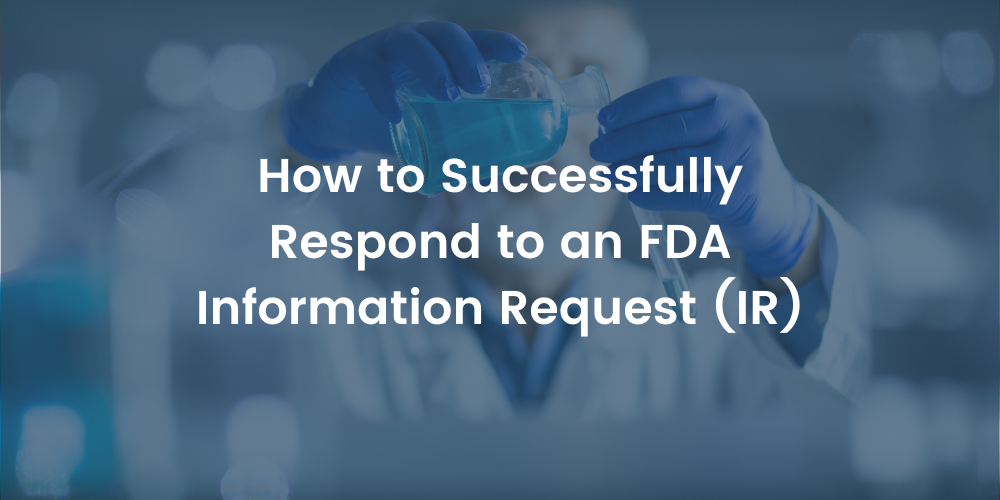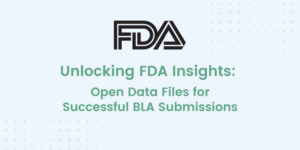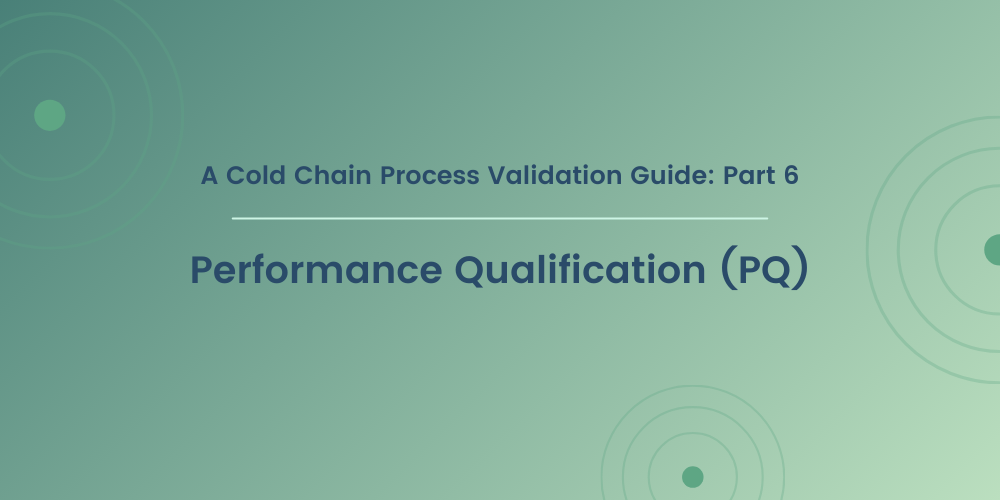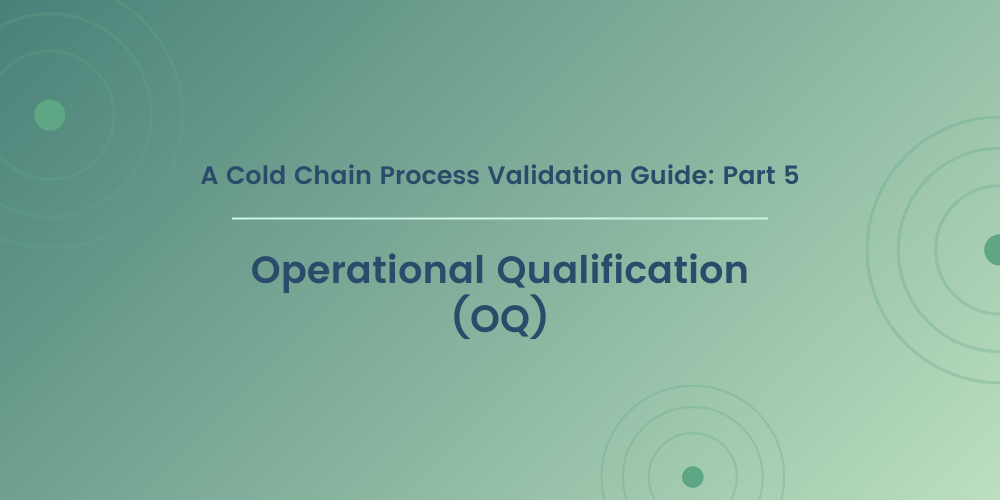How to Successfully Respond to an FDA Information Request (IR)
Getting your vaccine or therapeutic approved by the FDA is a significant accomplishment. But...
read Details

Are you aware of the open data files published online by the FDA?
This wealth of information includes redacted versions of CMC reviews, meeting minutes, Summary Basis for Regulatory Action letters, Complete Response Letters, and Post-Marketing Commitments for approved therapies. Fortunately, we are taking the time to comb through these files to find specific agency feedback on topics that may impact and guide your approach to shipping validation.
Today, I’ll be doing a deep dive into a Complete Response Letter (CRL) from 2021 on a pegfilgrastim biosimilar presented in a pre-filled syringe.
Kashiv Biosciences filed a Biologics License Application (BLA) in 2020 for a pegfilgrastim biosimilar presented in a pre-filled syringe (trade name Fylnetra). The FDA issued a CRL in August 2021, which included identified gaps within the shipping validation program that made the Application unapprovable.
The first identified gap centers around the design of the proposed real-world shipping studies:
“Real-time shipping validation studies are proposed to be performed for the drug substance . . . and drug product . . . according to the provided protocols. The acceptance criteria for product quality testing are proposed to be per release testing specification effective at the time of protocol execution. This is insufficient and additional criteria should be implemented to assess whether the change in product quality during shipment is acceptable.”
In this, the FDA states that relying on release testing specifications as the acceptance criteria in a real-world shipping study is insufficient. Their reasoning is that release testing alone will not show any differences in the studied material that occur before/after the shipment. As the material used in these studies has cascaded through the supply chain, the Sponsor did not have data on its disposition prior to shipment. Therefore, if using a real-world study approach, Sponsors need to ensure that they can retrieve analytical data on their product disposition both before and after the shipments occur.
However, the pre-study data does not need to be generated in a separate round of testing. The key consideration here is to understand the disposition of the product before the study begins. Therefore, standard release testing can be leveraged if that condition is met, such as if the study originates from the manufacturing facility. However, if the product has been potentially altered prior to the study (such as through shipping), data should be generated to determine the disposition of the product prior to starting the study.
Of note, this methodology only applies to instances where the study focuses on changes in quality. The Sponsor must decide during protocol development if their acceptance criteria will be based on allowable differences or simply adherence to release specifications, a product-specific decision. If disposition changes from release are allowable, this will permit greater flexibility in the results of the analytical testing. If, however, changes are not allowed, the acceptance criteria can focus solely on adherence to the predetermined release specifications.
With a clear understanding of when analytical testing needs to occur, the next consideration is which assays need to be performed. The FDA also gave guidance on this:
“In addition, the protocols should also clearly list all attributes that will be tested and provide sufficient justification if any of the attributes that are routinely assessed on stability are not performed. Update the protocols . . . to include all product quality attributes that will be assessed pre- and post-shipment and include sufficiently narrow acceptance criteria for appropriate attributes that indicate the allowed change in product quality from before and after shipment.”
The most crucial part of this statement is the clarification that not all assays performed for release and/or stability are required for the shipping validation studies. The Sponsor can reduce the assays to only those that would demonstrate a potential change in product quality, potentially saving time and reducing costs. There are assays that are typically included in release and/or stability that can, therefore, easily be removed from shipping validation studies, such as product identity tests.
Therefore, the FDA guidance on shipping validation requirements for BLA filings is clear: the Sponsor must demonstrate the impact of shipping on the therapy through analytical testing. The Sponsor should also have data from before and after the studies to show potential changes in attributes, although not all assays from release and/or stability testing are required, as long as technical justification is provided.
This CRL also provides a very intriguing statement by the FDA which highlights the limitations of real-world studies:
“Based on the information provided, the drug substance (DS) may potentially be exposed to temperatures as high as redacted °C during shipping. We recommend that the DS real-time shipping study be performed with DS stored at redacted and shipped at redacted in order to support that product quality of DS is not impacted by the higher temperature that may occur during shipping conditions. If the study does not consider the highest temperature the DS may be exposed to during commercial shipping, you may be restricted to redacted.”
While the exact figures are redacted in this document, there is enough information here to understand the situation. The DS likely has different specifications for the allowable storage conditions and the allowable shipping conditions, a common situation for frozen DS and DP. For example, the storage condition may be ≤ -65 °C, and the allowable shipping conditions ≤ -20 °C.
The FDA is stating here that in order to justify this more lenient temperature range for shipping, the Sponsor must generate data from a study that occurs at the upper part of this temperature range. This is difficult to control during real-world shipping, especially for frozen DP/DS. In frozen shipments, Sponsors are often using dry ice shippers which tend to maintain the product temperatures around -60 °C until the dry ice has sublimated, after which the temperature rapidly warms. Therefore, generating the data requested here by the FDA is essentially impossible to do in a real-world shipping study.
Luckily, this is not an issue when leveraging transport simulation methodologies. At Modality Solutions, our laboratories are capable of controlling the temperature while the product is simultaneously exposed to vibration, shock, pressure, and/or humidity. This perfectly simulates a worst-case shipment at a desired setpoint. In this example, Modality could execute a study at the warmer shipping temperature specification and fully meet the FDA’s requirement.
This Complete Response Letter provides a wealth of information on the FDA’s expectations for shipping validation in a BLA. There is specific feedback on the requirement to demonstrate product quality is maintained through shipping, including the timing and selection of analytical assays. Lastly, it signals a clear warning about the shortcomings of using real-world testing to meet this requirement, giving a specific example of a limitation in the commercial supply chain that could have been avoided if transport simulation was used.
Getting your vaccine or therapeutic approved by the FDA is a significant accomplishment. But...
read Details
This six-part article series explores Cold Chain Process Validation, addressing the multifaceted challenges and...
read Details
This six-part article series explores Cold Chain Process Validation, addressing the multifaceted challenges and...
read Details